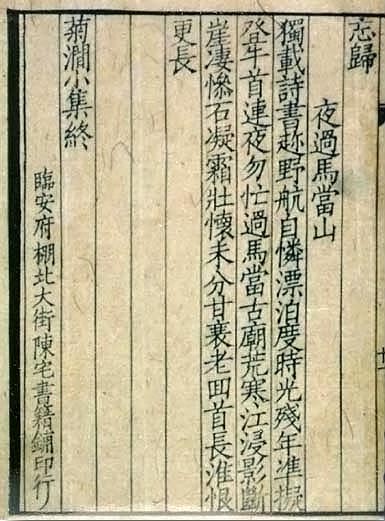 | ||
Imitation Song is a style of Chinese typefaces modeled after a type style in Lin'an in the Southern Song Dynasty. They are technically a type of regular script typeface.
Contents
Name
The name of this kind of typeface varies across regions that use Chinese characters.
Characteristics
Characteristics of imitation Song typefaces include:
History
The printing industry from the Tang Dynasty reached an apex in the Song Dynasty, during which there were three major areas of production:
When Song lost control of northern China to the Jin (金) dynasty, its capital was moved to Lin'an (modern Hangzhou), where there was a revival of printing, especially literature from Tang left in what was conquered by the Jin Dynasty. Many publishers were established in Lin'an, including Chén zhái shūjí bù (陳宅書籍鋪) established by Chen Qi (Chinese: 陳起; pinyin: Chén Qǐ), from which publications used a distinct style of regular script with orderly, straight strokes. Modern typefaces of this style are classified as imitation Song typefaces (Chinese: 仿宋體).
